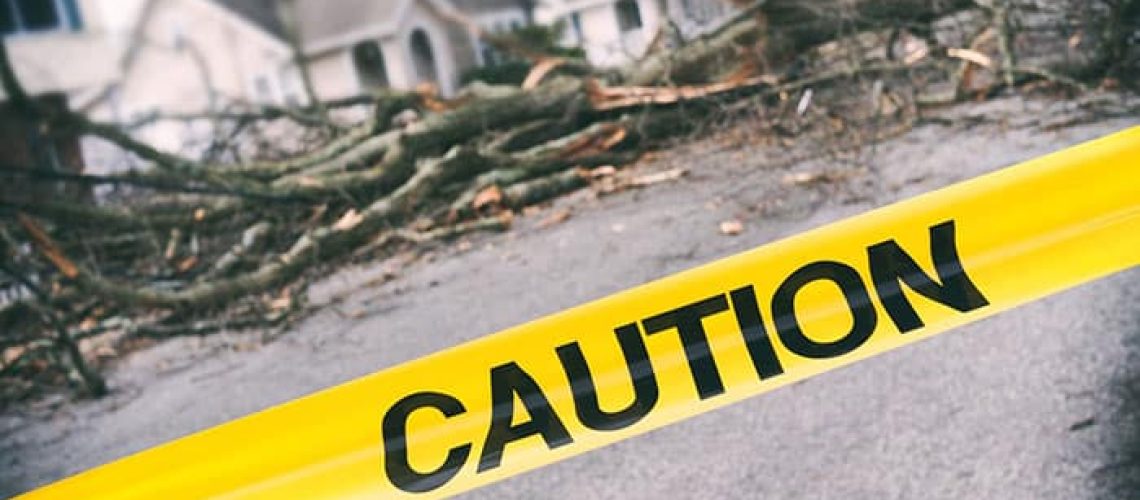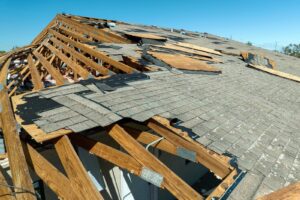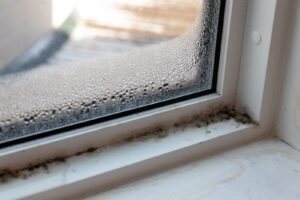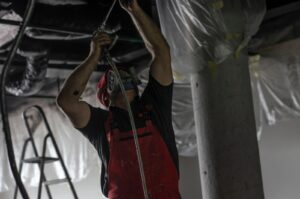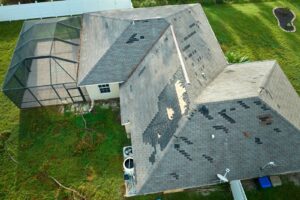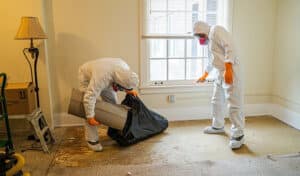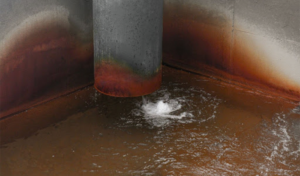It’s no secret that wind damage can wreak havoc on your home, car, or business. But does insurance cover wind damage, or are you left to cover those repairs on your own dime?
Today’s blog explains what insurance covers and provides tips for preventing wind damage, so you’ll know how to respond. Keep reading to learn everything you need to know.
What Is Wind Damage?
Wind damage refers to the harm that strong winds cause to structures, objects, and people. Wind damage often occurs during extreme weather conditions such as hurricanes, tornadoes, and storms.
Wind damage can affect homes, cars, businesses, etc. It can cause fallen trees, broken windows, roof damage, and structural collapse, among other things. Wind damage can also result in power outages, communication disruptions, and other public safety issues.
The severity of wind damage ranges from mild to catastrophic. It depends on factors like the speed and direction of the wind, what gets damaged, and how prepared your property is to withstand the damage.
Types of Wind Damage
Home
Strong winds can damage different parts of your home, including the roof, windows, doors, and siding. The wind can lift up shingles, tear off gutters, and even cause the entire roof to collapse.
Broken windows and doors can allow wind and rain to enter your home, leading to water damage, mold growth, and other issues. The siding of your home can also be damaged, leading to exposure to the elements and potential structural damage.
Wind damage to your home can leave you and your family without a safe and secure place to live, requiring costly repairs and temporary housing until the damage is fixed.
Car
Strong winds can significantly damage your car, especially during extreme weather conditions such as hurricanes and tornadoes. Wind damage to your car can include broken windows, dented bodywork, and even flipped-over vehicles.
The force of the wind can push debris, such as fallen trees, branches, and other objects, into your car, leading to scratches, dents, and shattered windows. High winds can cause your car to sway and lose control, potentially leading to an accident.
It’s important to take precautions during severe weather conditions, such as parking your car in a sheltered area or garage, avoiding driving if possible, and securing any loose objects that could cause damage to your vehicle or others. In the event of wind damage to your car, it’s important to have comprehensive insurance coverage to help cover the repair costs.
Business
Strong winds can damage your building’s roof, walls, windows, and doors, leading to water leaks, structural damage, and other issues that can disrupt your business operations. The wind can also knock down trees, power lines, and other objects that damage your property, equipment, and inventory.
Depending on the severity of the damage, you may need to temporarily close your business, leading to lost revenue and potential loss of customers.
It’s important to have the right insurance coverage for wind damage and take steps to prepare your business for possible wind damage to minimize the risks and costs associated with wind damage.
This includes regularly maintaining your building’s structure, securing loose objects, and having a disaster plan to minimize downtime and ensure business continuity.
Types of Insurance Coverage for Wind Damage
Homeowners Insurance
Homeowner’s insurance can cover wind damage from hurricanes, tornadoes, and strong winds. This type of insurance can cover the cost of repairs to your home’s structure, including the roof, walls, and windows, as well as any damage to your personal property located inside your home.
Depending on your policy specifications, your homeowner’s insurance may also cover additional living expenses if your home is uninhabitable due to wind damage. It’s important to review your policy and understand the specific coverage limits and deductibles and any exclusions or limitations that may apply.
It’s also a good idea to take preventative measures, such as trimming trees, securing loose objects, and installing storm shutters or impact-resistant windows.
Car Insurance
If you have the right coverage, car insurance can help cover wind damage to your car. Comprehensive coverage is the type of car insurance that typically provides coverage for wind damage, but it is not included with basic insurance. It’s an option you can include in your coverage.
This coverage can protect you from losses due to severe weather events like hurricanes and tornadoes and other non-collision incidents such as theft, vandalism, and falling objects.
If wind damages your car, your comprehensive coverage can help pay to repair or replace your vehicle up to the limits of your policy. Taking preventative measures such as parking your car in a garage or sheltered area during severe weather can also minimize the risk of wind damage to your vehicle.
Business Insurance
Business insurance can cover wind damage to your property and assets. Commercial property insurance typically covers wind damage to a business’s buildings, equipment, inventory, and other physical assets. This coverage can help pay to repair or replace damaged property, as well as any lost income due to temporary business closure.
Business interruption insurance can help businesses recover from unexpected losses like power or water outages that affect business. Taking preventative measures such as securing loose objects and installing storm shutters or impact-resistant windows can also help minimize the risk of wind damage to your business property.
Insurance Claims Process
Reporting your loss or damage to your insurance company begins the claims process. The insurance company will then assign a claims adjuster to investigate your claim and assess the extent of the loss. The adjuster will inspect the damaged property, gather information, and review any relevant policy documents to determine your coverage and the amount of compensation you are entitled to receive.
Once the adjuster completes their investigation, they will work with you to settle the claim and disburse the compensation. The claims process can vary depending on the insurance coverage type and the claim’s complexity.
You’ll need to keep detailed records and documentation of the damage. You should also communicate openly and honestly with your insurance company throughout the process.
What’s Covered vs. What’s Not Covered
Your insurance will cover the following if you selected that specific coverage when you signed your policy. These things are not automatically included in every insurance policy.
- Home repairs. Homeowners insurance typically covers fire, wind, and vandalism damage to the structure of your home. It also covers personal belongings that are damaged or destroyed by covered events. Homeowners insurance provides liability coverage for accidents on the property, such as someone slipping and falling on a wet floor.
- Car repairs. When it comes to car repairs, basic liability insurance typically only covers damages or injuries that you cause to other people or their property while you are driving. If you want coverage for damages to your own vehicle, you will need to add comprehensive and collision coverages to your policy.
Comprehensive coverage pays for damage from theft, vandalism, and natural disasters, while collision coverage pays for damages caused by a collision with another vehicle or object.
- Business repairs. If you’re a business owner, it’s important to have insurance coverage for any damage that may occur to your property or equipment. Business insurance can help cover the costs of repairs or replacement of damaged property, as well as any lost income.
- Replacing damaged items. This will typically be included in your homeowner’s insurance if you selected personal property coverage. This will ensure furniture, electronics, and clothing replacement if these items are damaged beyond repair.
In addition to homeowner’s insurance, you can opt for specialized insurance that covers jewelry, artwork, or collectibles. - Reimbursing living expenses. This generally falls under loss of use coverage, which is usually part of your homeowner’s or renter’s insurance policy. It’s for covered losses like fire, flood, or storm damage and reimburses you for temporary lodging, meals, and transportation.
Other issues, like floods, earthquakes, natural disasters, and property neglect, are not covered under regular insurance. However, you can purchase specific insurance policies to have those issues covered.
Contact Restoremasters Today
If your home has sustained wind damage, call Restoremasters today at 801.948.2478 or contact us through the form on our website. We have decades of experience restoring homes and businesses from wind damage; we’re here to restore your home to its pre-loss condition. Don’t wait; call us today!

